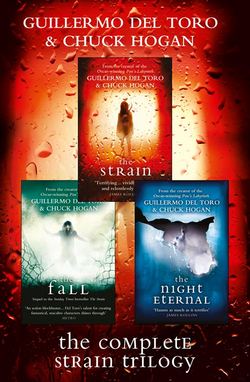Читать книгу The Complete Strain Trilogy: The Strain, The Fall, The Night Eternal - Чак Хоган, Гильермо дель Торо, Guillermo Toro del - Страница 34
Manhattan
ОглавлениеNEW YORKERS CONGREGATED in Central Park, the fifty-five-acre Great Lawn filling up as though for a summertime concert. Those who had set out blankets and lawn chairs earlier in the morning now stood on their feet with the rest, children perched on their fathers’ shoulders, babies cradled in their mother’s arms. Belvedere Castle loomed purple-gray over the park, an eerie touch of the gothic in this pastoral open space dwarfed by the East and West Side high-rises.
The great island metropolis ground to a halt, the stillness of the city at that hour felt by all. It was a blackout vibe, anxious yet communal. The occultation imposed a sort of equality upon the city and its denizens, a five-minute suspension of social stratification. Everyone the same under the sun—or the lack thereof.
Radios played up and down the lawn, people singing along with Z100’s spinning of the seven-minute Bonnie Tyler karaoke favorite “Total Eclipse of the Heart.”
Along the East Side bridges connecting Manhattan to the rest of the world, people stood next to their stopped vehicles, or sat on the hoods, a few photographers with specially filtered cameras clicking from the walkways.
Many rooftops hosted early cocktail hours, a New Year’s Eve-type celebration dampened, for the moment, by the fearsome spectacle in the sky.
The giant Panasonic Astrovision screen, in night-dim Times Square, simulcast the occultation to the terrestrial masses, the sun’s ghostly corona shimmering over “the crossroads of the world” like a warning from a distant sector of the galaxy, the broadcast interrupted by flickers of distortion.
Emergency 911 and nonemergency 311 systems took a torrent of calls, including a handful from preterm pregnant women reporting early “eclipse-induced” labor. EMTs were dutifully dispatched, even though traffic all over the island was at a virtual standstill.
The twin psychiatric centers on Randall’s Island in the northern East River confined violent patients to their rooms and ordered all blinds drawn. Nonviolent patients were invited to assemble in the blacked-out cafeterias, where they were being shown movies—broad comedies—although, during minutes of the totality, a noticeable few grew restless, anxious to leave the room but unable to articulate why. At Bellevue, the psych ward had already seen an uptick in admittances that morning, in advance of the occultation.
Between Bellevue and the New York University Medical Center, two of the largest hospitals in the world, stood perhaps the ugliest building in all of Manhattan. The headquarters of the chief medical examiner of New York was a misshapen rectangle of sickly turquoise. As the fish truck off-loaded bagged corpses, wheeled on stretchers into the autopsy rooms and walk-in refrigerators in the basement, Gossett Bennett, one of the office’s fourteen medical examiners, stepped outside for a quick break. He could not see the moon-sun from the small park behind the hospital—the building itself was in his way—so he instead watched the watchers. All along FDR Drive, which the park overlooked, people stood between parked cars on the never-idle throughway. The East River beyond was dark, a river of tar reflecting the dead sky. Across the river, a gloom overhung all of Queens, broken only by the glow of the sun’s corona reflected in a few of the highest, west-facing windows, like the white-hot flame of some spectacular chemical-plant blaze.
This is what the beginning of the end of the world will look like, he thought to himself before returning to the M.E.’s office to assist in the cataloging of the dead.
